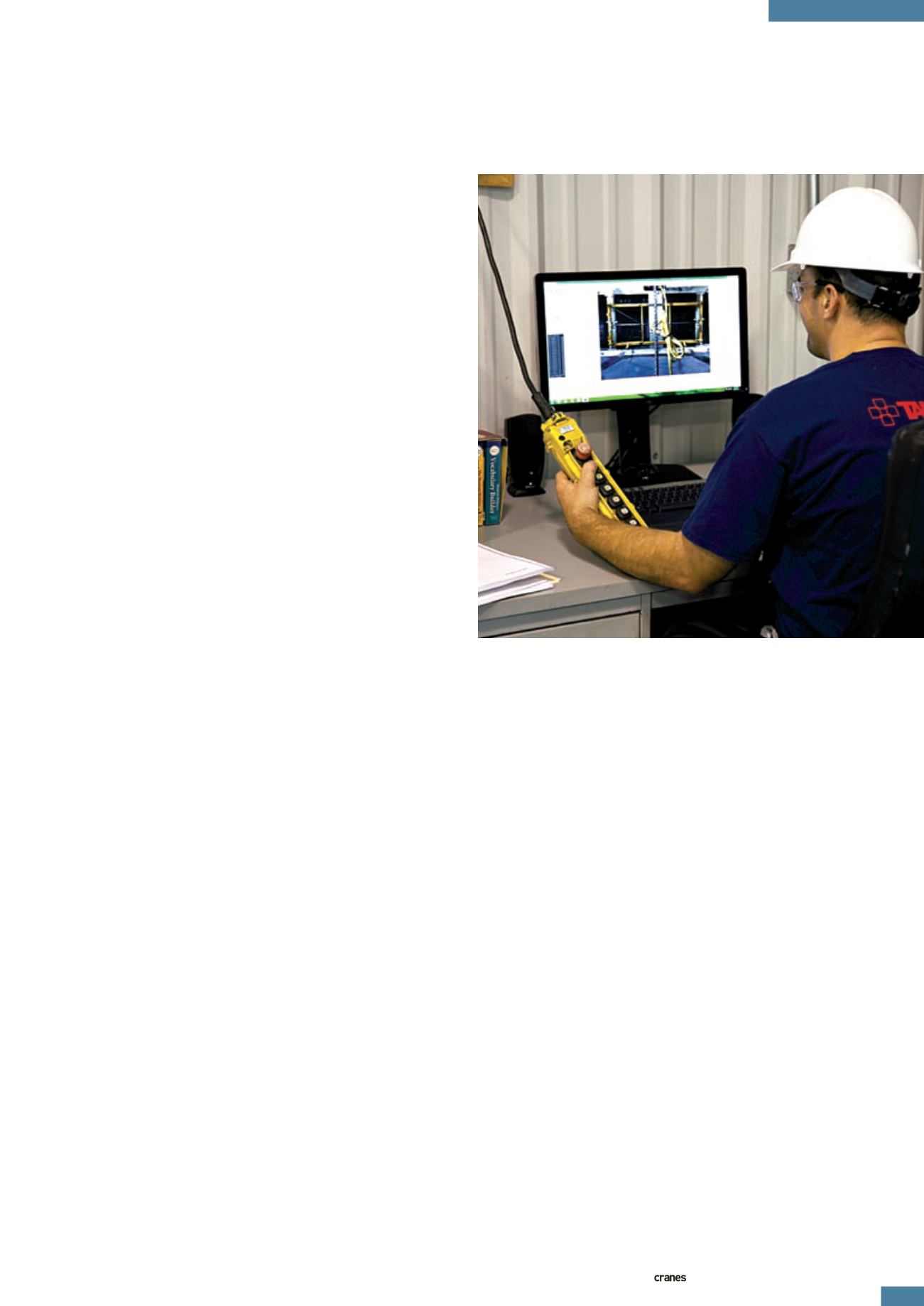
51
INTERNATIONAL AND SPECIALIZED TRANSPORT
■
NOVEMBER 20
13
companion sub-paragraph
Load Test
, is pointed at the
manufacturer and contains
specific instructions for testing
and reporting.
Responsibility
The paragraph in
Load Test
describes proof testing. The
125 % proof test verifies that
no catastrophic failure can
occur when the equipment is
used as intended. Further, this
level of testing will determine if
some unexpected engineering,
materials, or manufacturing
situation has occurred which
would reduce the capacity of
the lifter to something less
than the capacity design point.
This puts the correct burden
where it belongs; on the
manufacturer. The end user
is tasked to have the equipment
‘tested’ prior to initial use and
should correctly expect, and
require, that proof testing to
be done by the manufacturer.
We believe that it is incumbent
upon the manufacturer, for
ethical, professional, and safety
assurance reasons to proof
test every below the hook
T
he issue surrounding
testing of below the
hook equipment is
the requirement for and the
industrial response to proof
testing. Technical guidance is
provided for design of below
the hook lifting devices in
ASME B30.20
, but it says very
little about testing.
The standard includes
requirements for those
functions for lifting devices
other than slings. However, in
Chapter 20 of that guidance
the word ‘shall’ is defined
to ‘indicate that the rule
is mandatory and must be
followed’ whereas ‘should’
indicates that ‘the rule is
a recommendation, the
advisability of which depends
on the facts in each situation’.
The words used in
the guidance are used
inappropriately. In the sub-
paragraph
Operational Tests
,
the equipment user is told that
‘new and reinstalled lifting
devices shall be tested by a
qualified person’; the tests
that are therein described
are essentially ‘warm up the
engine, check that the lifting
device works, check the lights
and gauges’. The user cannot
‘test’ the materials, the welds,
the design engineering, yet
they are required to test.
The next sub-paragraph,
Load Test then instructs that
‘prior to initial use, all new,
altered, modified, or repaired
lifting devices should be
tested and inspected.’ While
the former sub-paragraph on
Operational Tests
is clearly
written for and to, the user
of this equipment, this
SAFE VIEW
lifting device.
End users of below the
hook equipment provided
by some manufacturers
cannot assure that those
items have been proof tested
through their own required
inspections or from the
markings on the equipment.
Sometimes the test certificates
that are received are historic
documents that reflect batch
testing or sampling done on
like items. To avoid any such
confusion, we can track each
product from purchase order
to work order to engineering
drawings to engineer test plan
to photographic and electronic
(DVD) records of each and
every test. These DVD’s are
available to every customer.
We support the position
that the end user should
request proof testing from the
manufacturer of below the
hook lifting devices. Very few,
if any, end users could perform
the testing described by
B30.20
and yet they are told that they
‘shall.’ We are told that we
‘should’ but feel strongly that
we must. And we do.
■
A grey area in proof testing
In addition to the
need for universal
safety standards,
testing is another
area of below the
hook equipment
that is generating
some debate
in the industry.
WILLIAM FISKE,
from Tandemloc,
discusses the
problem
“It is incumbent upon the manufacturer,
for ethical, professional, and safety
assurance reasons to proof test every
below the hook lifting device.”
William Fiske, Tandemloc


